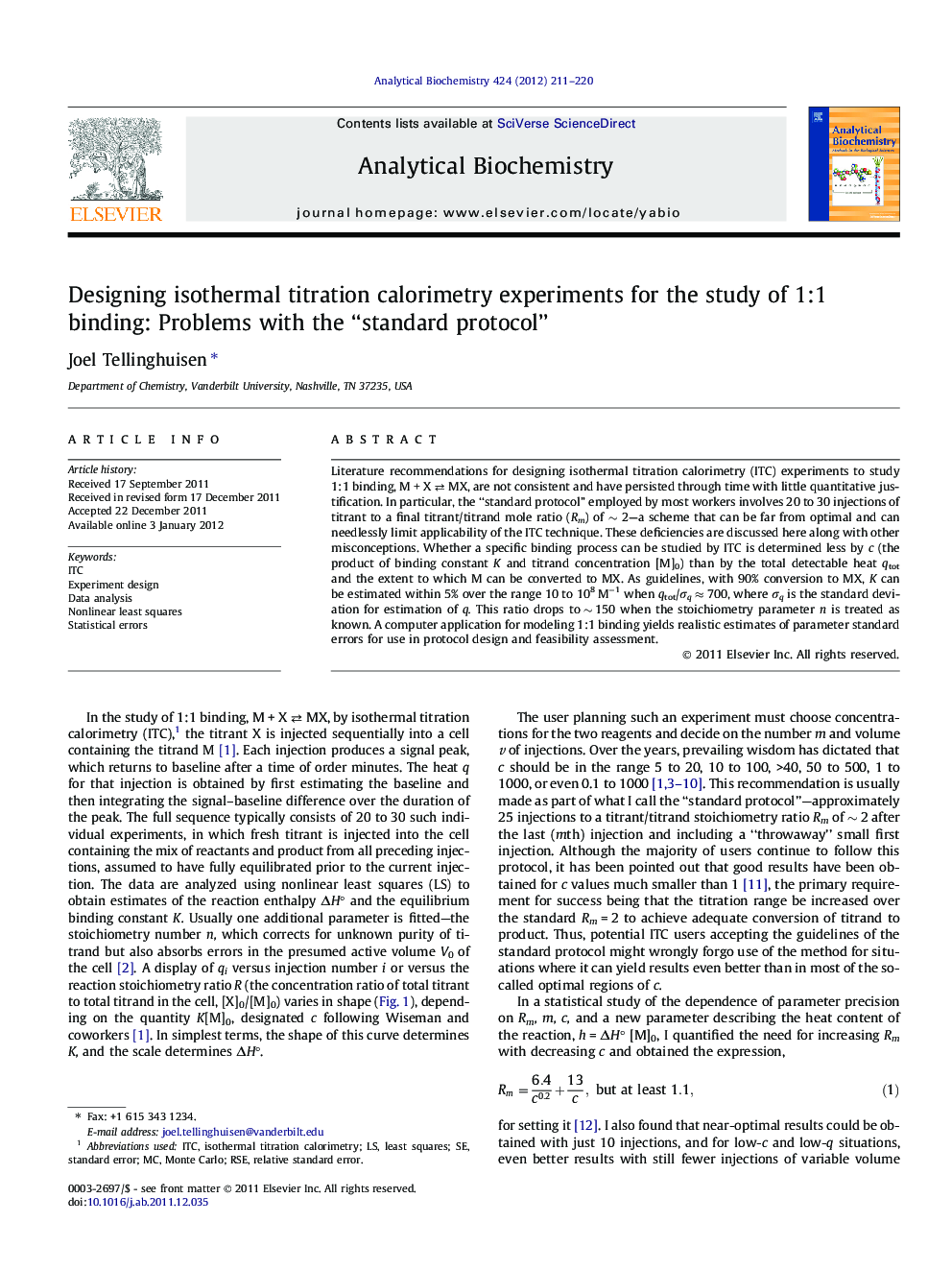| Article ID | Journal | Published Year | Pages | File Type |
|---|---|---|---|---|
| 10532751 | Analytical Biochemistry | 2012 | 10 Pages |
Abstract
Literature recommendations for designing isothermal titration calorimetry (ITC) experiments to study 1:1 binding, M + X â MX, are not consistent and have persisted through time with little quantitative justification. In particular, the “standard protocol” employed by most workers involves 20 to 30 injections of titrant to a final titrant/titrand mole ratio (Rm) of â¼ 2-a scheme that can be far from optimal and can needlessly limit applicability of the ITC technique. These deficiencies are discussed here along with other misconceptions. Whether a specific binding process can be studied by ITC is determined less by c (the product of binding constant K and titrand concentration [M]0) than by the total detectable heat qtot and the extent to which M can be converted to MX. As guidelines, with 90% conversion to MX, K can be estimated within 5% over the range 10 to 108 Mâ1 when qtot/Ïq â 700, where Ïq is the standard deviation for estimation of q. This ratio drops to â¼Â 150 when the stoichiometry parameter n is treated as known. A computer application for modeling 1:1 binding yields realistic estimates of parameter standard errors for use in protocol design and feasibility assessment.
Related Topics
Physical Sciences and Engineering
Chemistry
Analytical Chemistry
Authors
Joel Tellinghuisen,
